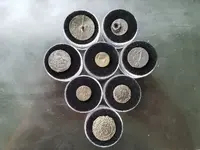Patriot Relics
Silver Member
Hey guys,
Out out this past week a few times despite the 100 degree weather and continuous thunderstorms. Hung up the DEUS and hit the coast with the mighty CTX. While I've come to love the XP as my inland machine, the CTX is the superior machine on the highly mineralized salt flats. The first site is a tried and true artillery site, over the past year producing a few War of 1812/CW relics. Not a ton of targets, but did manage 3 dropped bullets...2 rings but not 100% confident on the caliber...perhaps from a revolver, along with a few round balls.
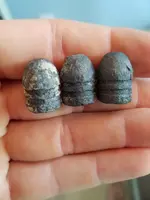
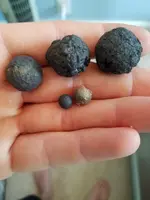
The next site was a colonial trash pit that always seems to produce a military button...the result of surplus military uniforms utilized to outfit slave labor in the 1850s. While I've hit the site dozens of times, fresh erosion revealed a new clay layer full of pottery and iron. By sweeping slowly and picking away between the iron I was rewarded with my first US cuff (1808-1830 30av in Alberts) and a pewter trouser button. The condition of this pewter cuff is incredible compared to the inland ones I've dug in the past.
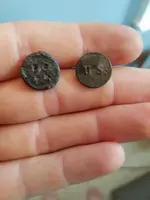
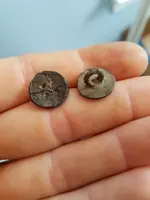
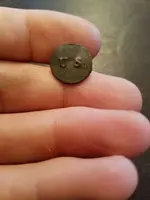
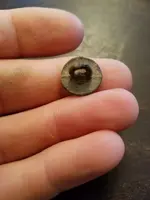
Among the iron trash I did manage a handful of civilian buttons and an interesting 1 piece ball button.
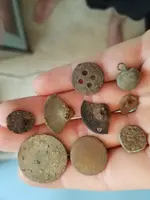
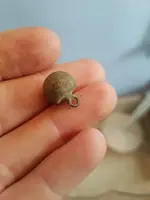
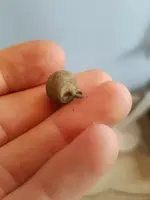
My favorite civilian digs were a copper ring and a glass jeweled buckle fragment. Any info on the ring is greatly appreciated-

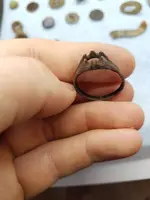
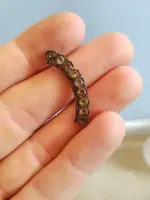
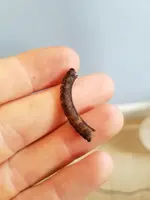
Also dug a rat tail pewter spoon fragment and an unknown copper alloy...thing
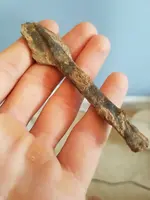
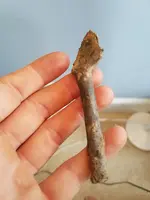
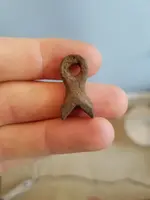
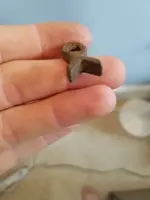
All in all a productive week in the mud, handful of brass ship building nails, harmonica, and assorted surface finds to round it out. Enjoy the pictures and good luck out there!
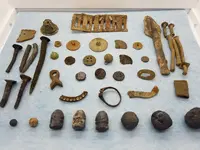
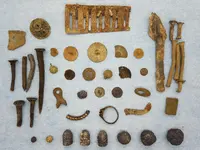
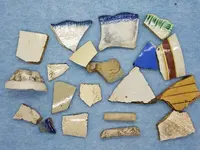
Out out this past week a few times despite the 100 degree weather and continuous thunderstorms. Hung up the DEUS and hit the coast with the mighty CTX. While I've come to love the XP as my inland machine, the CTX is the superior machine on the highly mineralized salt flats. The first site is a tried and true artillery site, over the past year producing a few War of 1812/CW relics. Not a ton of targets, but did manage 3 dropped bullets...2 rings but not 100% confident on the caliber...perhaps from a revolver, along with a few round balls.


The next site was a colonial trash pit that always seems to produce a military button...the result of surplus military uniforms utilized to outfit slave labor in the 1850s. While I've hit the site dozens of times, fresh erosion revealed a new clay layer full of pottery and iron. By sweeping slowly and picking away between the iron I was rewarded with my first US cuff (1808-1830 30av in Alberts) and a pewter trouser button. The condition of this pewter cuff is incredible compared to the inland ones I've dug in the past.




Among the iron trash I did manage a handful of civilian buttons and an interesting 1 piece ball button.



My favorite civilian digs were a copper ring and a glass jeweled buckle fragment. Any info on the ring is greatly appreciated-




Also dug a rat tail pewter spoon fragment and an unknown copper alloy...thing





All in all a productive week in the mud, handful of brass ship building nails, harmonica, and assorted surface finds to round it out. Enjoy the pictures and good luck out there!



Last edited:
Upvote
20



 It's weird how some pewters are in better shape than others. I wonder if a different alloy made them hold up better. I've dug toasted ones and perfect ones from the same soil. Great hunt!
It's weird how some pewters are in better shape than others. I wonder if a different alloy made them hold up better. I've dug toasted ones and perfect ones from the same soil. Great hunt!


